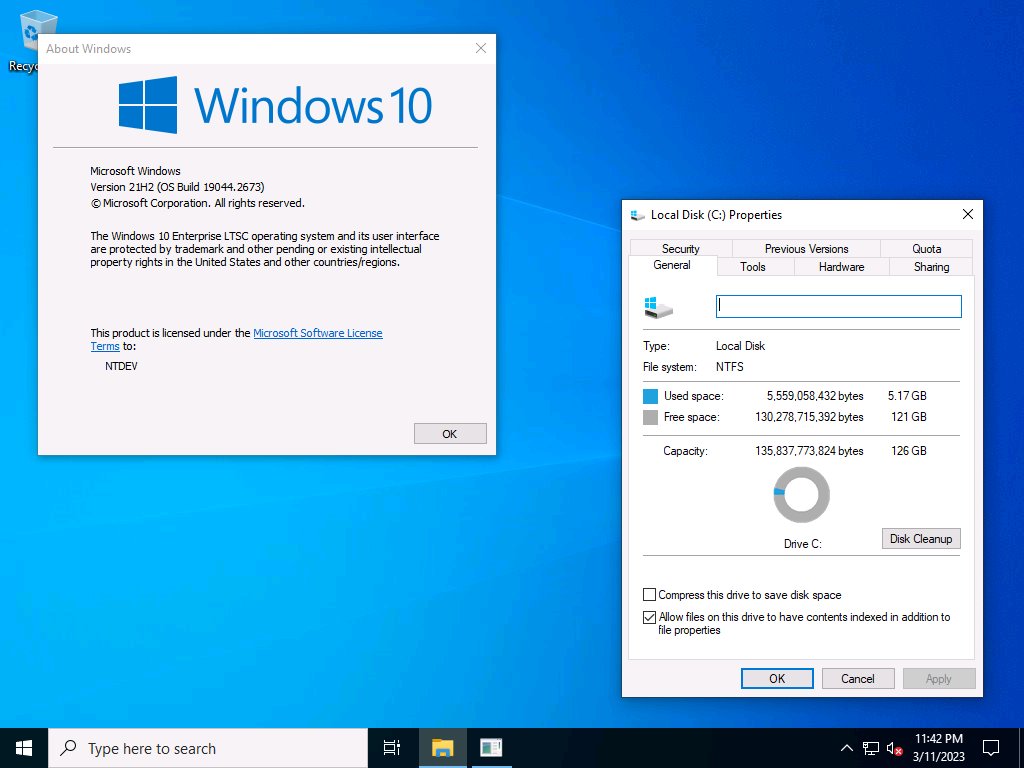Tiny10 is one developer's attempt at making Microsoft's Windows 10 operating system usable on older PC systems and also more enjoyable on modern systems.
When Microsoft released Windows 10 in 2015, it made sure that the operating system had the same system requirements as previous versions of Windows. This changed with the release of Windows 11 in 2021.
Still, Windows 10 felt noticeably heavier than previous versions of Windows, and users started to look for ways to improve the operating system's usability. Faster hard drives, more RAM, a speedier more powerful CPU, were just a few of the solutions that users came up with on the hardware side. Others tried to remove bloat from the operating system, hoping to make it leaner and more efficient in the process.
Some used PowerShell commands for certain removals, others tools designed for that purpose, such as the aptly named Bloatware Removal Tool.
Tiny10's developer, NTDEV, had a single goal in mind in regards to the Windows 10 version: make "one of the smallest Windows 10 variations possible".
Tiny10: the last version
The latest version of Tiny10, and the last version of it, as the developer wants to focus on the equally small Tiny11 project, has just been released. It is available as a free download on the Internet Archive website. The ISO image, called tiny10 2303 x86.iso has a site of just 3.1 gigabytes, which is already noticeably smaller than the ISO size of Windows 10, which weights over 5 gigabytes.

Microsoft's official recommendation for Windows 10 is 2 gigabytes of RAM and 20 gigabytes of storage for the 64-bit version. Tiny10 does not require nearly as much. The developer shared a screenshot of the latest version of Tiny10 occupying just 5.17 gigabytes on the system's hard drive. Windows 10, in contrast, may very well occupy more than 20 gigabytes after installation.
The majority of computers have 2 gigabytes of RAM and enough storage space to store Windows 10. In fact, you'd have to go back to the Windows XP and Windows Vista period to find a good percentage of devices with less than 2 gigabytes of RAM. Still, even with modern PCs, running a leaner operating system has its advantages.
Tiny10 is based on Windows 10 LTSC, but little else is revealed about the differences to the regular Windows 10 LTSC version. The developer has removed apps, services and system components that they described as bloatware.
All core features are included, which means that Windows users may install and use their favorite apps and games, protect their device with Windows Defender, and use important system tools such as Terminal and management tools. In essence, Tiny10 includes all essential features and tools of Windows 10 only.
The operating system installs quickly, thanks to its reduced size, even on very old systems. While as much RAM as possible is still recommended, it is clear from the get-go that Tiny10 makes Windows 10 more enjoyable on systems with a low amount of RAM. Tiny10 requires a Windows product key, otherwise it is running in trial mode only.
Closing Words
Tiny10 is a modified version of Windows 10 that streamlined Microsoft's operating system by removing much of its bloat. It installs and runs fine, even on very old PCs.
If there is one downside, it is the lack of documentation. The developer has a Patreon page, but information is restricted to subscribers. Some information about Tiny10, and Tiny11 for that matter, should be available publicly, including the removed components and other changes made to the system.
Thank you for being a Ghacks reader. The post Tiny10 makes Windows 10 endurable on (very old) PCs appeared first on gHacks Technology News.
☞ El artículo completo original de Martin Brinkmann lo puedes ver aquí

No hay comentarios.:
Publicar un comentario